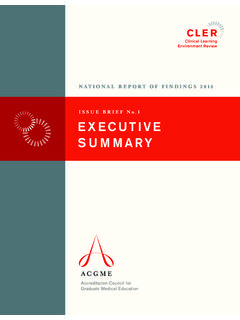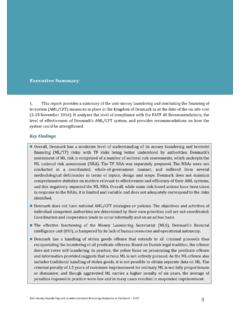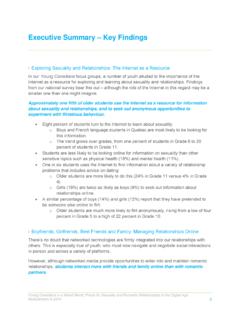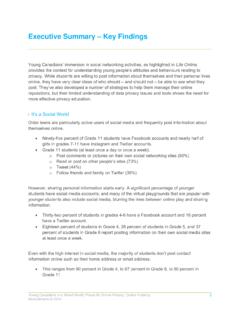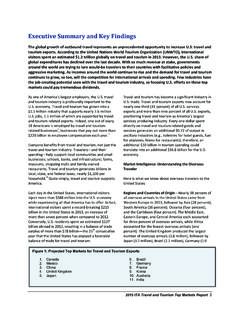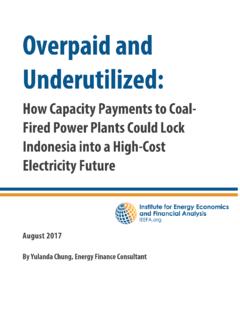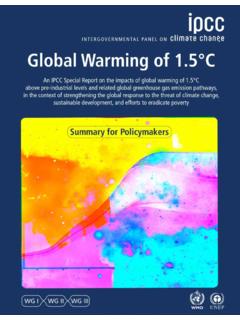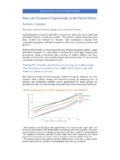Transcription of Executive Summary A. Key Findings - FATF-GAFI.ORG
1 Anti-money laundering and counter-terrorist financing measures in Portugal 2017 3 Executive Summary 1. This report provides a Summary of the anti-money laundering and combating the financing of terrorism (AML/CFT) measures in place in Portugal as of the date of the on-site visit (28 March to 13 April 2017). It analyses the level of compliance with the FATF 40 Recommendations, the level of effectiveness of its AML/CFT system, and makes recommendations on how the system could be further strengthened. A. Key Findings Overall, there is a fair level of understanding of the money laundering/terrorist financing (ML/TF) risks in Portugal, especially by law enforcement authorities and financial supervisors.
2 However, there is a mixed level of understanding amongst DNFBP supervisors. The National Risk Assessment (NRA) was based on public and private participation and provides an overview of the nature and level of ML/TF risks in Portugal. The methodology can still be improved and a review of specific sectors still needs to be conducted in order to have a comprehensive overview of ML/TF risks in the country, in particular, in respect to TF risks associated with Non-Profit Organisations (NPO). Financial intelligence, primarily based on suspicious transaction reports (STRs), is collected, used and disseminated amongst authorities for AML/CFT purposes. Operational authorities have direct or indirect access to comprehensive databases held by relevant agencies in order to facilitate the circulation and use of information for ML/TF investigations.
3 Assessors have concerns regarding the resource implications of the dual system of reporting suspicious transactions to both the FIU and the Public Prosecution office (DCIAP), and about the FIU s capacities to adequately process and analyse the increasing number of STRs received. In addition, the FIU does not have relevant resources to produce strategic analysis. Authorities show a high degree of commitment and capacity to investigate and prosecute ML cases, including complex cases, consistent with the main ML risks in the country. Criminal sanctions applied are proportionate and dissuasive. Portugal has had good results in freezing assets at the early stage of ML investigations to prevent the flight and dissipation of assets.
4 This practice, combined with the use of the enlarged confiscation regime, demonstrates the prosecution s priority to make crime 4 Anti-money laundering and counter-terrorist financing measures in Portugal 2017 Executive Summary unprofitable for criminals. TF is pursued as a distinct criminal activity, and parallel financial investigations are conducted to support counter-terrorism investigations. TF assets and instrumentalities related to TF activities are seized and confiscated. TF prosecutions have been initiated, but there have been no TF convictions in Portugal to date. Designations at the UN level apply directly in Portugal without the need for EU transposition.
5 Processes and procedures are in place to fully implement TFS in relation to TF and PF, and authorities demonstrated a high degree of competency in coordinating CFT and CPF activities. Portuguese authorities have been active in investigating and disrupting potential PF cases and cooperate well with authorities of other jurisdictions. In the financial sector, the application of proportionate mitigation measures by financial institutions (FIs) is satisfactory. Progress still needs to be made regarding the understanding of the beneficial ownership (BO) requirements. The application of risk-based supervisory models is ongoing, with Banco de Portugal being the most advanced in this regard.
6 Regarding DNFBPs, the understanding of ML/TF risks in the sector as a whole is moderate, including by sectors at higher risk of ML/TF. Supervisors conduct limited AML/CFT supervisory activities, which primarily follow a rule-based approach. Measures to prevent and detect unauthorised activities are applied in sectors where informal activities are a major issue. There is generally a good level of transparency of basic information on legal persons and arrangements, including foreign trusts established in the Madeira Free Trade Zone (FTZ). Sanctions applicable to non-compliance with transparency obligations are not dissuasive.
7 Information on beneficial ownership is mainly available from FIs, but the lack of understanding of the requirements by some FIs creates some concerns about the reliability of this information. International cooperation between Portuguese authorities and foreign counterparts is proactive and collaborative, and provided upon request and spontaneously, with priority given to terrorism and TF-related requests. Mutual Legal Assistance (MLA) and extradition are mainly used as complementary tools, in addition to more informal cooperation channels. B. Risks and General Situation 2. Over the last years, the overall economic, financial and social context of Portugal has been heavily affected by the 2008 global financial crisis.
8 The financial sector has been particularly hard hit, with banks in Portugal facing deteriorating balance sheets and liquidity pressure. The country is now going through a gradual recovery, but this situation has created vulnerabilities that could be potentially exploited by criminals. Portugal has a relatively low rate of violent crime. It has increasingly developed a diversified and service-based economy where tourism plays an important role and the real estate market shows stable growth. Due to its geographical position, Portugal is a Anti-money laundering and counter-terrorist financing measures in Portugal 2017 5 Executive Summary transit country between Latin America and West Africa to the rest of Europe, which facilitates the fl ows of funds, including illicit funds.
9 3. Portugal published a Summary of its national ML/TF risk assessment in 2015, which highlighted that the main ML predicate offences in the country are tax crimes, drug trafficking, fraud and corruption. The NRA also establishes that vulnerabilities include, inter alia: anonymous operations and transactions; informal transfer systems; the lack of knowledge of beneficial owners and existence of bearer securities; the lack of transparency in the real estate sector; and lack of resources for the supervision of compliance with AML/CFT requirements. Portugal also identified specific business sectors at risk, in particular the banking sector, real estate and high-value goods dealers, as well as countries which pose the most significant ML/TF risks for the 4.
10 On the TF side, the NRA indicates that the major risks to the country relate to Islamist groups and separatist movements, but overall the TF risk level is deemed to be low. C. Overall Level of Effectiveness and Technical Compliance 5. Portugal has brought a number of significant technical changes to its AML/CFT system since the 2006 mutual evaluation and the adoption of the AML/CFT Law in June 2008. For instance, it introduced measures on Politically Exposed Persons (PEPs), extended the concept of beneficial ownership and set up agencies for asset recovery and asset management. However, significant shortcomings are still noted for the transparency regime applicable to NPOs at risk of TF abuse and of legal persons and arrangements; the preventive measures for correspondent banking relationships and wire transfers; and the preventive and supervisory measures applicable to DNFBPs, in general.











